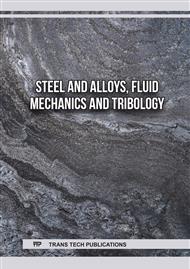p.79
p.87
p.99
p.107
p.117
p.125
p.135
p.165
p.179
Establishing a Tribo-System to Study the Frictional Effects of Lunar Regolith
Abstract:
A comprehensive study of the abrasive effects of lunar regolith is essential for mitigating damage to mechanical components during lunar missions. This research focuses on preparing lunar mare (LX-M100) and highland (LX-TH100) simulants with different particle size fractions to develop a tribological model for further investigation of their frictional properties. Fine and coarse simulants were separated using a digital electromagnetic sieve shaker, yielding five particle size fractions for each type. The sieving process revealed discrepancies between actual particle sizes and supplier data, highlighting the need for uniform particle size to ensure consistent wear testing. Simulants with uniform particle sizes produced more reliable and controlled wear patterns, especially in tribological experiments involving rotating shafts and seals. To replicate lunar conditions, future experiments will employ a custom-built pin-on-disc tribo-test rig and sand-pot test rig to evaluate the wear performance of a stainless-steel shaft and polytetrafluoroethylene (PTFE) seal. This study advances understanding of the abrasive impact of lunar dust, contributing to the development of more durable materials for future lunar exploration.
Info:
Periodical:
Pages:
117-123
Citation:
Online since:
June 2025
Authors:
Keywords:
Price:
Сopyright:
© 2025 Trans Tech Publications Ltd. All Rights Reserved
Share:
Citation:



